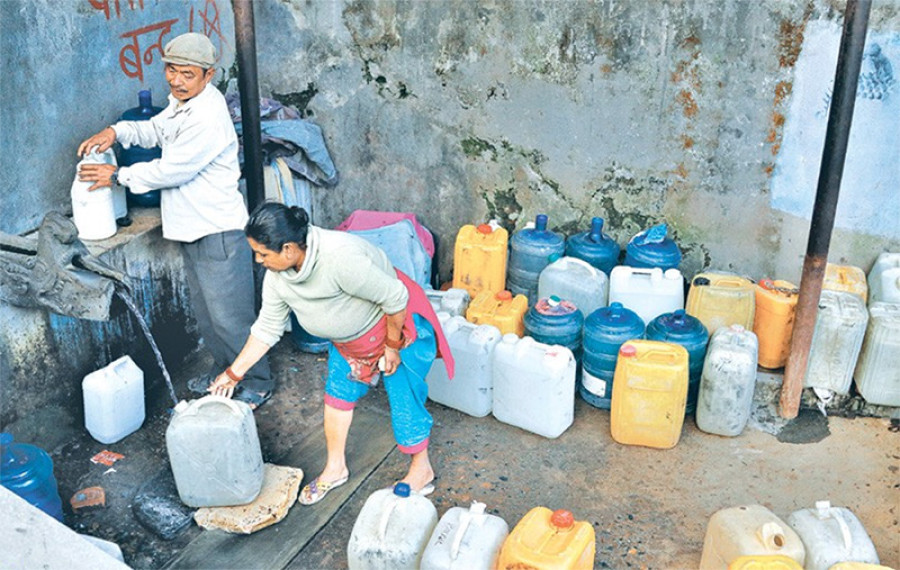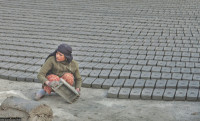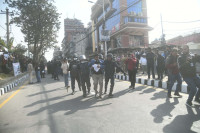Opinion
Exploring resilience
Women are more vulnerable to climate change because of their dependence on climate sensitive sectors
Prativa Sapkota
Differences in the discernible impacts of climate change in various regions across the world make it a complex global concern requiring context-specific local action on adaptation. Fragile topography, a dominant subsistence economy, weak institutional capacity for anticipatory governance, and the complex construction of socio-cultural landscape make Nepal particularly vulnerable to climate change. Women are more vulnerable because of their dependence on climate sensitive sectors such as forests and agriculture. Moreover, their vulnerability is associated with limited ownership of productive assets and decision-making power, and is further aggravated because of men’s out-migration.
“Things would be easier for me if my husband was here,” says the wife of a migrant worker in Kavre district. She is a Dalit woman whose husband is in the UAE, much like the husbands of many others in villages across Nepal. Both caste and gender place her at a disadvantage. Although she might not be able to define what climate change is, she feels its impacts and knows that adapting to it would be easier if she had more decision-making power on how to mobilise and use her resources. Potentially, some forms of out-migration can be an indicator of enhanced adaptive capacity if it provides women the opportunity to take up decision-making roles in the absence of men. However, limited rights and capabilities, particularly in relation to making financial decisions, difficulty in accessing support from relevant agencies, and increased responsibility as a result of labour shortage have increased women’s burdens. Efforts being made to draft and implement gender specific policies are not enough to address the differentiated vulnerabilities of men and women.
Policy-level discussions
‘Resilience’ has become a widely used concept, often referring to people’s capacities to adapt to changing environmental conditions. However, there have been very few discussions, if any, on the practical and policy-level implications of community resilience. Diversity, modularity, responsive and inclusive institutions, social networks and good governance are some of the factors identified as contributing to community resilience. The idea of increasing resilience draws from the notion that communities can recover from a disturbance without compromising their original capabilities. It is important to ensure that vulnerable communities not only bounce back to their original state but are able to anticipate future risks themselves and self-organise to meet the wider needs of marginalised groups.
Avoidance of and resistance to change at the individual level is largely reflective of individuals’ capabilities limited by the resources available at their disposal. Such avoidance and resistance reveals their vulnerability, often encouraged and sustained by prolonged political uncertainty and weak institutions at the local level. Enhancing the resilience of any vulnerable group is not as straightforward as it seems. Resilience is not a panacea and is criticised for not addressing socio-economic power relations which exacerbate women’s vulnerabilities. While scholarly recommendations include integrating critical social science to resilience, its discussion at the implication level is largely missing.
The resilience of a group or an individual can be built in various ways, such as by strengthening social networks, diversifying opportunities at the local level, reducing dependence on outsiders, ensuring better provision of the needs of different sectors of society, and forging effective and transparent links with the government. However, considering the differentiated vulnerabilities of men and women, it is extremely important that all the steps are made gender responsive. Acknowledging differentiated vulnerabilities for men and women should be the first step. Existing deterministic and technical tools of assessing vulnerability often fail to recognise socially constructed vulnerability. What is required is a subjective approach which recognises the nuances of differences among different individuals and groups. Such an approach would provide an inclusive and effective means to address the vulnerabilities that emerge as a result of roles and responsibilities being designated on the basis of gender.
Local knowledge and resources
Vulnerability to climate change is not merely an environmental or bio-physical issue. It involves complex interactions between environmental, social, political, economic and cultural factors. Effective resilience would require the adoption of a holistic approach relevant to the analysis of the processes and outcomes associated with marginalisation and vulnerability. Inter- and intra-community dynamics shape the process of marginalisation. When we look at remote and rural communities as a whole, such communities are marginalised because they are denied the most basic services. In Nepal, weak political activity at the grassroots means there is poor, if any, response capacity and service delivery. This has made groups that are already marginalised—women, Dalits, the landless, the poor—all the more vulnerable. Women’s vulnerability is exacerbated in the absence of men, affecting the way women receive support from the government to better adapt to climate change.
The last few decades have brought to light some issues in this context. The increased influence of aid agencies may leave communities more vulnerable in the longer term by increasing their dependence on others. It is important to encourage the use of local knowledge and resources. Increasing self-reliance is especially significant to building women’s resilience to climate change, and to empowering them to use new technologies whenever local efforts are inadequate. Another step towards building resilience of women at the grassroots level would be mobilising existing formal and informal institutions with meaningful participation of women. Nepal’s four decades of experience in community forestry is acknowledged for producing positive outcomes in environmental conservation and livelihood enhancement. Community forest user groups with women at decision-making levels have resulted in better outcomes for social justice, environmental conservation and sustainable development, even in the absence of elected local level representatives. The culture of working together deserves further nurturing, while discrimination based on caste, gender and wealth needs to be addressed. People who are vulnerable at the individual or household levels may be resilient as part of a community that is self-organised.
Sapkota is a gender and adaptation analyst at ICIMOD and can be reached at [email protected]




 10.12°C Kathmandu
10.12°C Kathmandu










